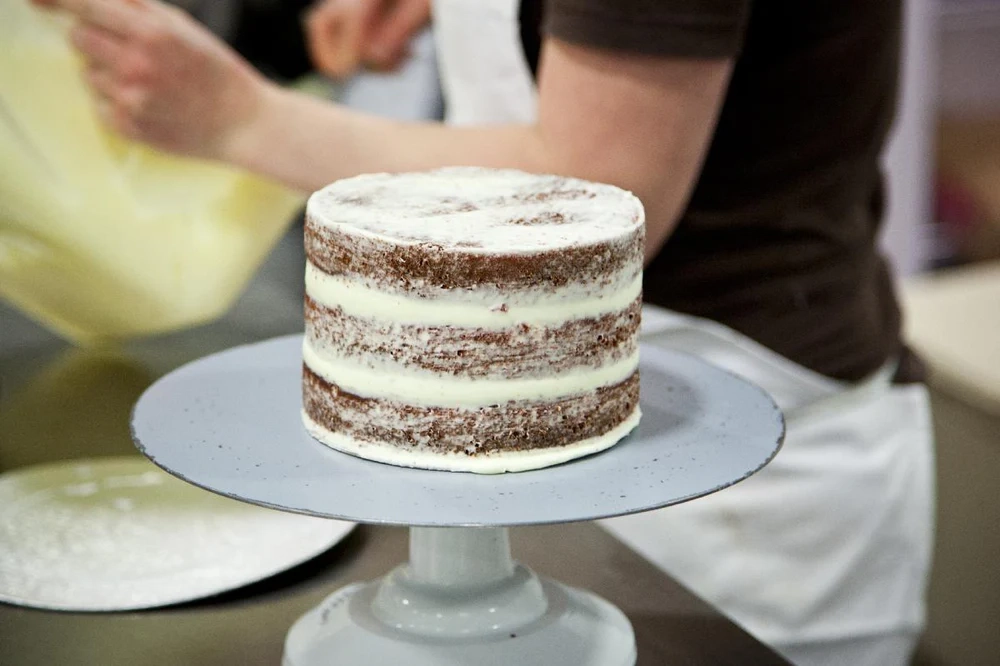
WHAT’S ALL THE FUSS ABOUT FLOUR? IT’S THE BAKER’S BEST FRIEND AND WE’LL TELL YOU WHY IT’S SUCH AN IMPORTANT KITCHEN COMMODITY IN OUR QUICK GUIDE TO THIS BAKING BASIC.
Okay, we’ll admit it, flour is hardly the most newsworthy ingredient. But where would we be without it?
Our fluffy little cupcakes would be flat, sloppy puddles and our beloved bakeries would be turning out omelettes! Quite simply, if cakes were a building, flour would be the bricks.
So, let’s take a closer glance at where flour comes from and how it brings its magic to our mixing bowls…
What is flour?
There are many varieties of flour, milled from all sorts of grains, but we use white wheat flour in our recipes. White flour (as opposed to wholemeal) contains around 75 per cent of the original wheat grain, but it has the bran and germ taken out.
How is flour made?
Millers are the magicians responsible for turning humble grains into fluffy mounds of flour ready for baking. They blend different varieties of grains to get the right mix, clean it up and process it to ensure only quality flour makes it into your cakes.
How does flour make my cakes rise?
Goggles at the ready, it’s time for the sciencey part! A little terminology is needed when explaining the many baking-boosting properties of flour.
When combining together ingredients for a cake, flour mixes with the wet ingredients (water and eggs) to make a protein matrix.
This structure of gluten in the flour and egg protein creates a trap for air bubbles, which expand in the heat of an oven and make the cake rise.
Raising agents, such as bicarbonate of soda and baking powder, can help this process along by creating more of those beautiful bubbles.
Does sifting make a difference?
Flour is sifted before it is packaged, but it is always worth sifting flour yourself before it goes into your mixing bowl.
The benefit of going that extra mile is twofold – not only will it remove any lumps, which inevitably settle during storage, but it also gets plenty of air into the mix. And there’s no need to hold your sieve high above the bowl, it won’t incorporate any additional air simply by travelling further!
How do I store my flour?
With any ingredient, keeping your flour in the right conditions when not in use will give your cakes the best texture and flavour.
A strong resealable bag with excess air squeezed out or an airtight jar is preferable, but it’s okay to keep flour in its original packaging.
Flour likes to be cool and dry and out of direct sunlight. Keep it well wrapped to guard from anything creepy or crawly (flour bugs are called psocids and like to make their home in dry foods).
Top tips:
If your cakes are coming out speckled with flour, this will be due to lumps getting into the mixture. Our advice? Sift, sift, sift!
Over-beating is the enemy when it comes to incorporating flour into your cake mixture. It should be combined, but don’t be too vigorous or you can lose all the lovely air you’ve carefully mixed in.
Too much flour? Your cake mix will be too stiff and the sponge too dry. Not enough flour? Your cake mix will be too wet and your sponge will be dense and stodgy. Flour forms a large proportion of your cake so be sure to get this basic perfectly measured out. A good set of digital scales is ideal for this task.
Follow us on
 hummingbbakery
hummingbbakery





